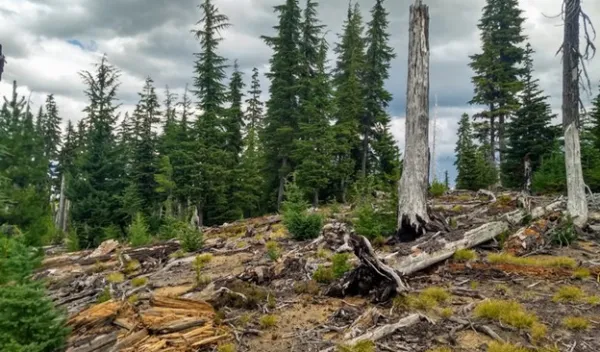
Study shows that 'green islands' help forests regenerate after fire
Thanks to trends like mountain snowpack loss, drier summers and longer fire seasons, high-elevation forests in the Cascade Range of the Pacific Northwest are burning more frequently and extensively than in the past. Increased fire damage has prompted researchers and fire managers to question whether forests will be able to recover naturally, or if they will require human assistance.
A study by Portland State University scientists characterizes the role of fire refugia -- the green islands of live trees that remain after forest fires -- in forest regeneration following large and severe fires in the Cascades in Oregon and Washington.
The results of the U.S. National Science Foundation-supported study can help determine when human intervention in the form of tree replanting is and isn't warranted, where replanting efforts should be targeted and what species should be prioritized. Replanting can be expensive and may result in overstocked forests with abnormally high tree density, reduced habitat quality and even greater risk of fires in the future.
Sebastian Busby and Andrés Holz conducted the study, which was published in Frontiers in Forests and Global Change.
"To a great extent, these fire patterns in high elevation forests are occurring due to climate change," says Holz. "After the fires, the green islands we term refugia may be the last bit of hope we have for the forests to recover naturally."
Forests in the Cascades may have historically burned only once per century (or even less frequently) due to a historically wet and cold climate. As the climate has continued warming, some areas have burned two or more times over the past 20 years, with some fires severe enough to wipe out most trees across large expanses of forest.
Once burned, these forests primarily regenerate from the dispersal of seeds from live trees in fire refugia. If there are only a few live trees seeding an area, it may be hard for the forest to regenerate naturally. These areas may transition into an ecosystem such as grassland, shrubland or a different type of forest.
In this study, Busby and Holz used a combination of satellite imaging and field work to determine how characteristics of fire refugia affected their ability to regenerate the surrounding forestland.
The researchers found that some characteristics of refugia led to more tree regeneration. For instance, refugia with taller and presumably older trees increased tree regeneration, and certain species, such as mountain hemlock, dispersed more seeds into burned areas, leading to higher tree regeneration when compared to other species.
"Forest managers across the U.S. face the difficult task of identifying which areas should be replanted following a wildfire," says Tom Evans, a program director in NSF's Division of Behavioral and Cognitive Sciences. "This research provides valuable results and methods the stewards of our forests can use to identify areas where trees are likely to recover on their own, and where replanting will be needed, making forest recovery more cost-effective and efficient."
